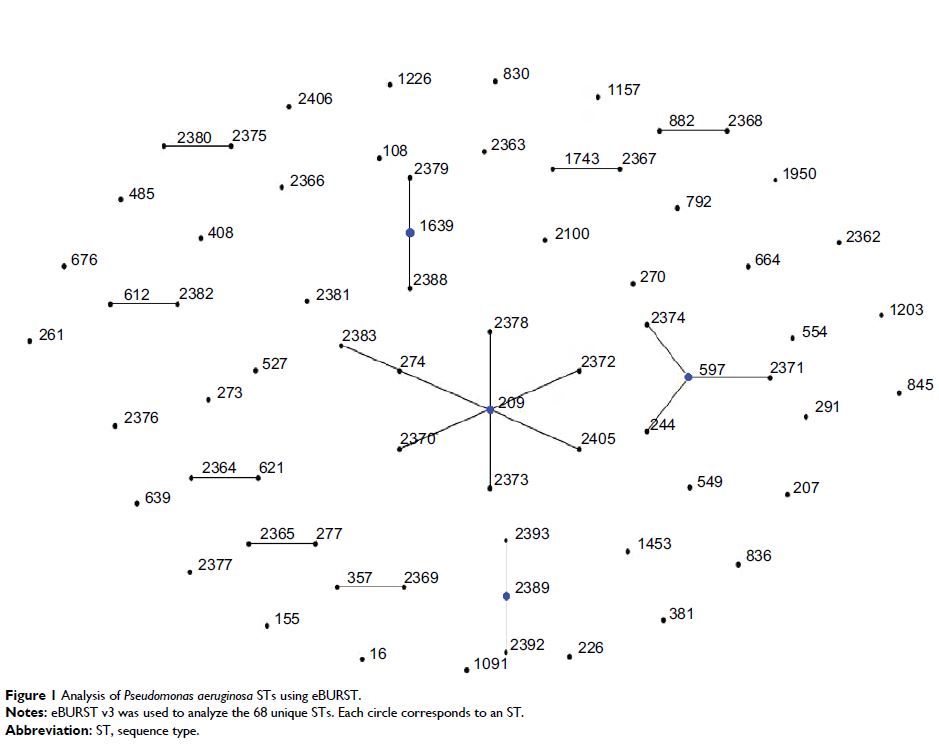9 0 5 7 8
论文已发表
注册即可获取德孚的最新动态
IF 收录期刊
- 2.6 Breast Cancer (Dove Med Press)
- 3.9 Clin Epidemiol
- 3.3 Cancer Manag Res
- 3.9 Infect Drug Resist
- 3.6 Clin Interv Aging
- 4.8 Drug Des Dev Ther
- 2.8 Int J Chronic Obstr
- 8.0 Int J Nanomed
- 2.3 Int J Women's Health
- 3.2 Neuropsych Dis Treat
- 4.0 OncoTargets Ther
- 2.2 Patient Prefer Adher
- 2.8 Ther Clin Risk Manag
- 2.7 J Pain Res
- 3.3 Diabet Metab Synd Ob
- 4.3 Psychol Res Behav Ma
- 3.4 Nat Sci Sleep
- 1.9 Pharmgenomics Pers Med
- 3.5 Risk Manag Healthc Policy
- 4.5 J Inflamm Res
- 2.3 Int J Gen Med
- 4.1 J Hepatocell Carcinoma
- 3.2 J Asthma Allergy
- 2.3 Clin Cosmet Investig Dermatol
- 3.3 J Multidiscip Healthc

从一家中国医院分离的铜绿假单胞菌 oprD 基因的多位点序列分型及变异研究
Authors Liu H, Kong W, Yang W, Chen G, Liang H, Zhang Y
Received 20 September 2017
Accepted for publication 30 October 2017
Published 8 January 2018 Volume 2018:11 Pages 45—54
DOI https://doi.org/10.2147/IDR.S152162
Checked for plagiarism Yes
Review by Single-blind
Peer reviewers approved by Dr Amy Norman
Peer reviewer comments 2
Editor who approved publication: Professor Suresh Antony
Objectives: To
provide information about the genetic relationships and mechanism underlying
carbapenem resistance in Pseudomonas aeruginosa clinical
isolates of a hospital in China.
Materials and
methods: One hundred and sixty P. aeruginosa strains were
isolated from a hospital in China. Susceptibility to 14 antimicrobial agents
was determined by antimicrobial susceptibility testing. Multilocus sequence
typing was used to characterize the genetic backgrounds of these clinical
isolates. Forty-five strains were randomly selected for further evaluation of
their carbapenem resistance mechanism. Their oprD gene
was compared with the PAO1 sequence.
Results: Multilocus sequence typing analysis demonstrated that these isolates
were highly diverse; 68 sequence types were identified, of which 28 were novel
sequence types. Polygenic and eBURST analysis demonstrated genetically similar
clones with dissimilar resistance profiles. Among the 45 randomly selected
strains associated with carbapenem resistance, 2 were metallo β-lactamase
producers; all the 45 strains were not AmpC overproducers. Sequence analysis
revealed a high diversity in the oprD sequences
among isolates. Strains susceptible to imipenem and meropenem with shortened L7
and L8 loops in oprD were the
major strain types observed in this hospital.
Conclusion: This study indicated that oprD provided
the main mechanism for carbapenem resistance. The shortened L7 and L8 loops are
responsible for carbapenem susceptibility.
Keywords: Pseudomonas aeruginosa , multilocus
sequence typing, carbapenem resistance, L7 and L8 loops in OprD
